Paper Doll
Paper Doll Interviews Motivational Wordsmith Kara Cutruzzula

Welcome back to another installment of our rare Paper Doll series of interviews with colleagues and special guests. I’ve interviewed productivity specialist Melissa Gratias, academic/life coach and inventor Leslie Josel, genealogy organizers Janine Adams, Jennifer Lava, and Hazel Thornton, and life coach/author Allison Task.
Today, I’m excited to introduce you to journalist/writer/editor/playwright/lyricist/librettist Kara Cutruzzula (rhymes with Methuselah!), friend-of-the-blog and purveyor of motivational oxygen.
We met when I subscribed to Kara’s newsletter Brass Ring Daily in 2019. She’d provided a link to a spec script she’d written for Gilmore Girls, one of my all-time favorite TV shows, and I wrote a fan-girling email to tell her how brilliant and talented she was, the subject line of which was, “My neighbor was awakened by my raucous laughter thanks to your Gilmore Girls script!” Kara’s ear for dialogue and how she made secondary and tertiary characters like Michel and Lane absolutely shine were impressive.
Paper Doll readers may initially wonder what Kara’s talent for capturing the distinct voices of characters on a hit television show has to do with organizing and productivity, the bread-and-butter topics here on this blog. But you’ll soon see — and it all started with that get-to-know-you chain of emails where Kara and I traded our insights about the process of getting things done — and the frustration of not getting things done.
it’s OK to archive that email you never responded to back in August 2021.
it’s also OK to respond! yes, today!
less OK is staring at in your inbox for another six months.
free yourself. one or the other.
— Kara Cutruzzula (@karacut) February 22, 2022
We kept finding ways to work together and support one another’s efforts. I interviewed Kara about newsletter writing and magazine editing for a monthly meeting of the NAPO Authorship & Publishing Special Interest Group and then she interviewed me for a great feature for Forge, Medium’s personal development outlet. Readers, that piece, Now Is the Right Time to Declare Bankruptcy on Your Projects, is so good, you should open it in another tab right now so you don’t forget to read it.
And Kara just interviewed me for the soon-to-premiere season #2 of her Do It Today podcast! If you find productivity compelling, or you could use a little motivation to turn your dreams into reality, get to know Kara!

EVERY SUPERHERO HAS AN ORIGIN STORY
Paper Doll: Could you tell Paper Doll readers about your early life and college years? I know you majored in English at UCLA. What did you plan to do when you finished school?
Kara Cutruzzula: Hearing this question makes me laugh because…I didn’t have a solid plan! My Big Idea was to move to New York and find a job “working with words.” (So cute!) I was applying for internships and editorial assistant jobs every day. Book publishers, magazines, websites, university presses, you name it.
A few weeks after graduating I bought a plane ticket and took advantage of the generosity of my aunts Gina and Jo by crashing on a pull-out couch in their apartment (we called it “the nook”) and crossed my fingers I would find something to do. Then I did.
This highlights something that’s come up over and over again in my career: First you leap, then you figure it out.
You have used your words to craft a set of interlocking and parallel careers. Basically, you’re a polymath (a fancy-pants way of saying Renaissance Woman). Your fascinating and diverse experience includes work as an editor, writer, newsletter creator, playwright, lyricist, and podcaster.
Did (or how did) your internships in film and TV prepare you for the career path you’ve had? How did you get your start in writing for online outlets?
In hindsight these unpaid college internships (at a film development company, at a publicity firm working on Oscar campaigns, and a B2B travel magazine) laid stepping stones for the future. I loved taking the bus (yes, I was the rare LA bus rider) to the 20th Century Fox lot to work at the film development company.
Sure, I picked up chopped salads for the executives, but I also read and wrote coverage of screenplays and TV pilots, and covered assistants’ desks when they were out of the room. (To this day, there’s still nothing scarier to me than “rolling calls” — placing and returning phone calls to intimidating execs at a lightning-fast pace!)
Working at the travel magazine was a great stroke of luck, too. The editor-in-chief, Ken, kindly set me up on an informational interview with a magazine editor when I moved to New York. No job came from that interview, but even a short getting-to-know-you meeting is a huge lift to your spirits when you’re 21 and don’t know anyone in the industry.
As for writing, if you caught me during the first five years of my career, I wouldn’t have called myself a writer at all! In 2008, I was hired as a culture intern at The Daily Beast, a then two-month-old website founded by editor Tina Brown. The team was small, maybe 15 people, and that was my real education. I helped the culture editor plan out culture coverage — what was the site going to cover and how were we going to cover it? — and transcribed interviews and contacted publicists and all sorts of other tasks.
Then I became a homepage editor. Remember, this was back in 2008. We weren’t getting traffic from social media. People actually visited a website’s homepage. As a homepage editor, you were responsible for story placement, headlines, photos, and deciding what needed coverage on the Cheat Sheet — basically “the mix,” as Tina called it. What did people want to read? (Actually, being a homepage editor was scarier than rolling calls!) But there was a real sense that what you were doing was important. You were covering the news. Everyone was incredibly invested, and the team was brilliant.
After The Daily Beast merged with Newsweek in 2010, I moved over to the magazine side to edit and assign stories for the back-of-book section covering film, TV, theater, fashion, and a back-page feature called “My Favorite Mistake,” where I interviewed James Earl Jones, Barbara Corcoran, Richard Branson, and other fun folks. But I got a crash course in magazine editing. Very different from editing for a website! You can only fit so many words on a page. I loved it.
This is a very long way of saying I was primarily an editor for four years. It was fun and rewarding and also exhausting. Newsweek published its Last Print Issue in 2012 (it’s since been resurrected) and I was laid off.
I didn’t want to work full-time at another magazine or website. (This was 2012; freelancing was a little less common than it is now.) So I thought: What else is out there?
Over the next 10 years, I became a writer.
GRABBING THE BRASS RING
You launched Brass Ring Daily in 2017. What caught my eye in those daily emails and the (now) 1000+ newsletter archive was the fact that while you were writing about disparate aspects of your own life, theater, and things that were going on in the world, you were blending motivational quotes, advice about productivity and self-empowerment, and doing it all without trying to sell anything. And Vanity Fair called it, “A life coach in your inbox.”
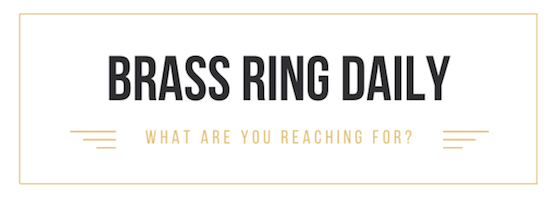
What prompted you to start the Brass Ring Daily? What has meant the most to you about the experience?
I became a freelance writer and editor — I even spent a solid three years as a travel writer — but I was also holding these monthly “summits” at my apartment where creative folks and friends would talk about projects and share resources.
[Paper Doll Editor’s Note: My late, great high school history teacher, Mr. Fred Murphy, would have wanted me to draw the parallels between Kara and Madame de Staël, an 18th- and 19th-century Frenchwoman and writer, famous for connecting the greatest minds of her era in salons.]
I took notes during these meetings so that one editor’s name or that great productivity tool was recorded for anyone who needed it. I wrote up a summit recap and sent it out to the group.
After a year or two, my friends Alison and Daphna asked if I ever thought about starting a newsletter. So…I did! And it’s the smartest thing I’ve ever done for my career and also my sense of self as a writer. I always tell people to own something for themselves, even if that something is small.
The newsletter gave me a daily deadline that wasn’t attached to an editor or assignment. I didn’t have to answer to anyone, except my own nagging guilt if I skipped a day. And it gave me a place to collect all the inspirations, book quotes, and my own thoughts on creating. The newsletter collects them and allows me to let them go — basically, it’s my most important tool for organization!
[Paper Doll Editor’s Note: Brass Ring Daily often has delightful cameos by baby animals.]
WORDS AND MUSIC: KARA’S NAME UP IN LIGHTS
You’re also a musical theater lyricist and librettist, and from your newsletter, I know you’ve worked on a wide variety of projects as part of the BMI Musical Theatre Advanced Workshop and the BMI Librettists Workshop. Can you tell readers about Letters from May and The Marvelous Mrs. Maisel Musical?
The Kara of 2008 would think it is completely wild that the Kara of 2023 writes musicals. I got into the BMI Workshop, which has been around since 1961; the workshop self-describes as “the setting where the writers of A Chorus Line, Little Shop of Horrors, Nine, Ragtime, Avenue Q, Next To Normal, and The Book of Mormon, among many others, learned their craft.”
For the first two years, lyricists and composers attend a two-hour weekly workshop and present songs they’ve written and get feedback from the room. I only cried like five times. Learning something new is hard. Being a beginner is hard. Thankfully, now I cry much less often.
Lyricists and composers attend a two-hour weekly workshop, present songs they've written, and get feedback. I only cried like five times. *Learning something new is hard. Being a beginner is hard.* ~ @karacut Share on XLetters From May is a 10-minute musical written with composer Kristoffer Bjarke as our first-year project. It tracks the life of an artist, May Dalton, over 50 years as she wrestles with questions of fame and sacrifice. Last year, it was produced at a festival in New York, which was a joyful experience after the pandemic knocked the wind out of the sails of many musical theater writers (myself included).
During year two of the workshop, composer Ron Passaro and I adapted [the Amazon Prime TV show] The Marvelous Mrs. Maisel into a musical, which was another great joy.
Musicalizing such strong and vivid characters was a fun challenge — and of course, Julie, you know I love Amy Sherman-Palladino’s writing more than anything. [Paper Doll Editor’s Note: Sherman-Palladino created Gilmore Girls, Maisel, and the under-appreciated Bunheads, which starred Broadway’s beloved Sutton Foster. It’s streaming on Hulu. Thank me later.]
Right now, Kristoffer and I are developing Marathon, which is an original one-act musical which takes place entirely during a race. It’s about patience, persistence, and finding the capacity within yourself to do hard things.
THE TURNING POINT: MOTIVATION & GETTING PUBLISHED
I usually ask interviewees, “What would you say was the turning point that helped you identify your true calling and fine-tune what you do professionally?” But you seem to be what folks have been calling a multipotentialite. Have you HAD a turning point, or are you still discovering many different true callings, all around your love of words?
LOL. I usually feel like I have no idea what I’m doing and also like I’m just getting started. The last 15 years have felt like a prolonged learning process — a stage I named “percolation” in Do It Today. Culture editing informed my freelance writing; editing influenced my lyric writing; and on and on. I want to do a lot of things and am always worried about not finishing enough or over-thinking what I’m making.
One kind of guiding light over the past 15 years was following random flickers of interest. What sounds interesting? Where do I want to go? What do I want to learn? I’ve never regretted going toward those new endeavors.
Writing is obviously a passion for you. Your first book was Do It For Yourself: A Motivational Journal, beloved by readers and reviewers for the combined uplifting wisdom and snazzy design. For people struggling, procrastinating on doing the big things that would make their hearts sing, you offer exercises to change mindset, overcome obstacles, and pursue follow-through.
Surprising Productivity Advice & the 2023 Task Management & Time Blocking Summit

In fields like science, medicine, and technology, surprising information comes out all the time, and with that, novel guidance and advice. In the world of organizing and productivity, however, there aren’t a lot of unexpected, planet-sized discoveries or wrecking balls to old beliefs.
Rather, in most aspects of organizing and productivity, we seek to find novel examples and tweaks to help people understand the best approaches for what they already know deep down. Today, I’d like to share three intriguing ideas I’ve heard recently, and an opportunity for you to discover more.
WORK AS HOBBY: OVERCOME PROCRASTINATION WITH A MINDSET SHIFT
The first concept comes from my friend and colleague Hazel Thornton. You may recall her from Paper Doll Interviews the Genealogy Organizers and when I profiled her new book, Go With the Flow! The Clutter Flow Chart Workbook, in Paper Doll Presents 4 Stellar Organizing & Productivity Resources a few weeks ago.
Paper Doll Shares Presidential Wisdom on Productivity
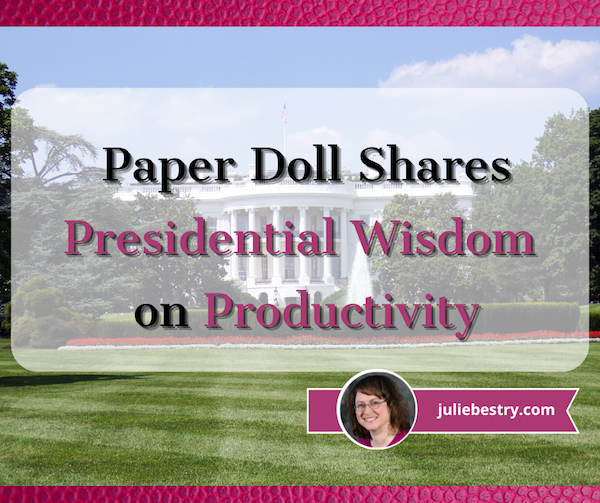
In honor of Presidents’ Day, I thought it might be fun to look at some of the values various US presidents have embraced to help them not only get more things done, but get more of the right things done.
Be assured, this is completely apolitical content. Additionally, let’s agree that we’re all aware of the complicated lives and backgrounds of presidents (particularly those born prior to the 20th century); none of this should be taken as full-on endorsements of them as men (few of whom would compare entirely favorably with Mr. Rogers), but only as people who endeavored to accomplish much.
And I give you a Presidents’ Day guarantee: you will not be encouraged to purchase a mattress anywhere within the text of this post. (That said, the vast majority of presidents who had something to say about productivity spoke robustly on the importance of sleep!)
PUNCTUALITY
People who are on time are dependable. If you arrive on time (or a little early), then those you are meeting need never fear that they are in the wrong place, that they are late, that you met with some misfortune, or that you forgot them.
Being somewhere on time shows respect for the value of other people’s time. It proves that you don’t consider what you were doing beforehand (or whatever made you late) to be more important that the activities of the person you are meeting.
But from a productivity standpoint, punctuality is efficient. If you’re on time, and if everyone else is on time, then you can stick to the agenda without apologies, hurt feelings, or distractions due to late arrivals or missed information.
George Washington was a stickler for punctuality. As a teenager, he carefully read and took notes on more than 100 rules about civility put together by 16th-century Jesuit priests. From there, Washington developed his Rules of Civility and Decent Behavior in Company and Conversation.
Paper Doll Presents 4 Stellar Organizing & Productivity Resources
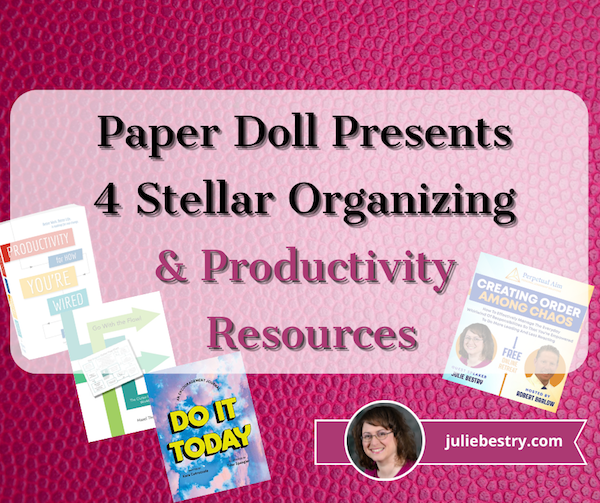
Given that it’s Valentine’s Day week, I wanted to give all of my Paper Doll readers some treats. In this post, we’ll be looking at three books covering organizing, motivation, and productivity, as well as an upcoming video interview series for taking a proactive approach to productivity in leadership.
GO WITH THE FLOW! (The Clutter Flow Chart Workbook)
If you’ve been reading Paper Doll for a while, the name Hazel Thornton won’t be new to you. We’ve been colleagues and friends for many years, and I’ve shared Hazel with you when I interviewed her (along with Jennifer Lava and Janine Adams) for Paper Doll Interviews the Genealogy Organizers and when I profiled her stellar book, What’s a Photo Without the Story? How to Create Your Family Legacy in my 2021 holiday gift list post.
Paper Doll Shares 8 Virtual Co-Working Sites to Amp Up Your Productivity
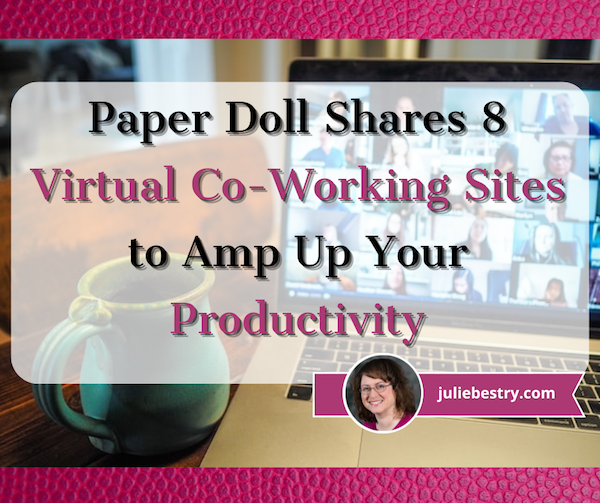
Last week, in Paper Doll Sees Double: Body Doubling for Productivity, we looked at the concept of body doubling and the mechanisms by which it helps us with productivity and accountability through social pressure, task orientation, biological cues, and extended focus.
My wise colleague Diane Quintana, CPO®, CPO-CD, who has expertise using body doubling with her clients with ADHD, added “…body doubling is a calming strategy. I find that when my clients are anxious or stressed over a particular task, using this strategy – quietly working alongside them – is a calming influence. They get more done in less time and with less stress.”
In that post, I walked through my experiences with body doubling one-on-one with clients, and virtually, in a group setting in co-writing sessions and at a writing retreat. I also laid out how to identify the ideal body-doubling method for your needs and the attributes to consider in seeking out a platform.
Whether you call it social focus, group body doubling, or co-working, if you haven’t been able to find the right mix of support and aren’t eager to create your own, you might want to consider one of the platforms profiled in this post.
FREE CO-WORKING WITH PREMIUM UPGRADES
Groove
Groove bills itself as a free accountability club and is targeted toward solopreneurs. It’s not a networking or venture capital matchmaking site, but it does seem to lean into convivial support and the possibility of making connections.
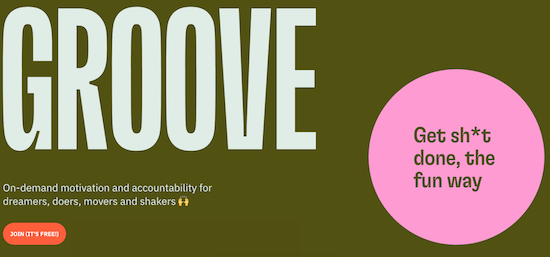
To start, and “to ensure the trust and safety” of their community, you fill out an online form with basic information: name, email, why you want to try Groove, a project you might like to conquer, and how you found out about Groove.
Next, download the Groove app for your mobile device. From the home screen, start a “groove” session, where you will be joined by one-to-three other participants. The app prompts each person through a one-minute video check-in to share goals for the forthcoming groove.
Next, microphones are muted and cameras are turned off, and you’re presented with a screen to enter your goal and break it into distinct tasks. As you work, you check off the tasks, and your fellow Groovers (Groovies?) can cheer your accomplishments via the in-app text chat.
After 50 minutes (the length of two Pomodoros without a break in between), cameras and microphones are turned back on, and there’s another video check-in to debrief.
Each Groove is exactly 60 minutes, including the worktime and the bookending check-ins. After completing one Groove, you can go right into another or just move on with your day. Groove says it helps users “ditch distraction, find focus, and celebrate small wins through social connection and peer support.”
If Groove assigns someone to your session with whom you’ve grooved before, the app adds a little caption to let you know the folks you’ve previously met (so you can say “Nice to see you again” instead of “Nice to meet you,” preventing social embarrassment for those who don’t really remember names or faces).
Groove operates 24/7 around the world, but notes that you’re most likely to encounter fellow Groovers during regular business hours in the US (and, one assumes, Canada).
In addition to ad hoc sessions with whomever is using the platform, you can also start a private Groove with specific individuals or schedule a Groove for later in the week. The latter is restricted to those who have grooved at least five times previously. Instructions are in the site’s FAQ.
If you’re a solopreneur and are looking for body doubling at no cost, this is a chipper and free option.
I see some potential disadvantages, however. The app is phone based; while some people (read: Millennials and Gen Z) might be comfortable using a phone for this kind of video chat experience and typing goals and tasks into a phone, others may be frustrated.
My vanity has taught me how to set up the light and achieve the best angle when I’m on a video call. Even if talking with strangers, I don’t want to be shot from below and my middle-aged arms can’t comfortably hold a camera up for that long. Also, I can barely type on my phone, so I dictate. I vastly prefer to use a full-sized (with numerical keypad) keyboard with my two desktop iMacs.
Of course, if the overall approach appeals to you, there are a few solutions. I found this inexpensive aluminum phone stand in a variety of colors, including a purple one that matches my iMac.

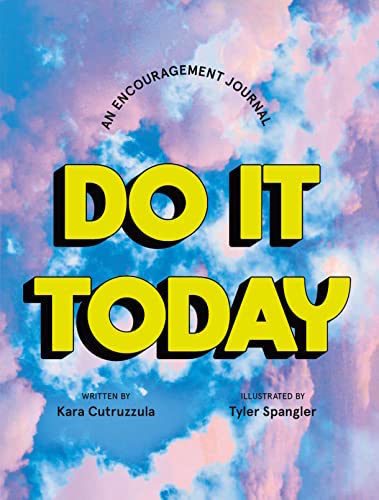



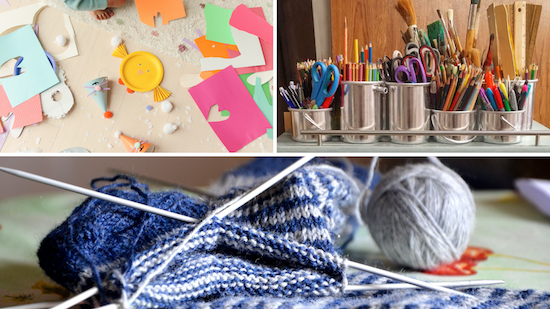

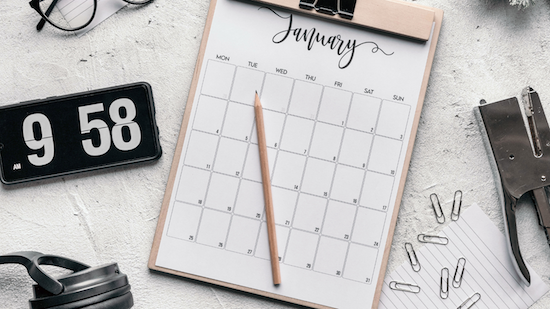




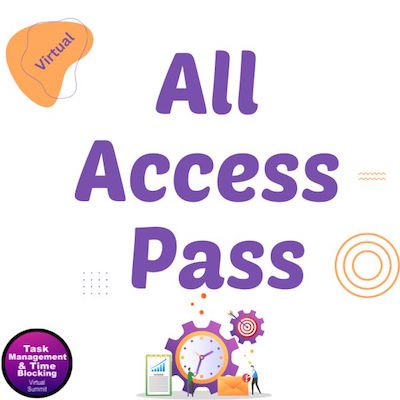 If you want more time to absorb everything, you can purchase an
If you want more time to absorb everything, you can purchase an 

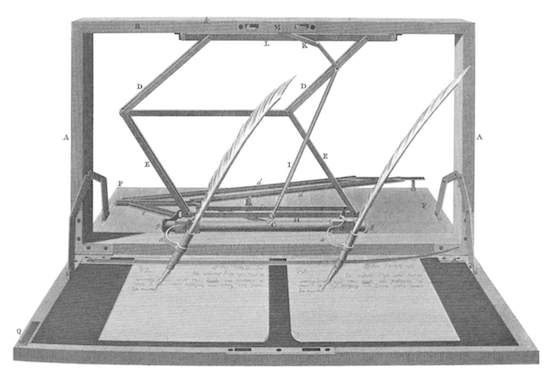
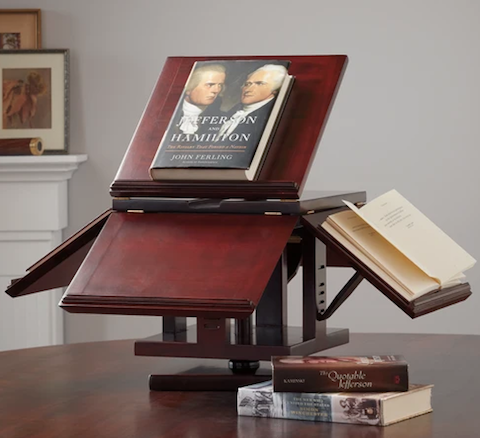



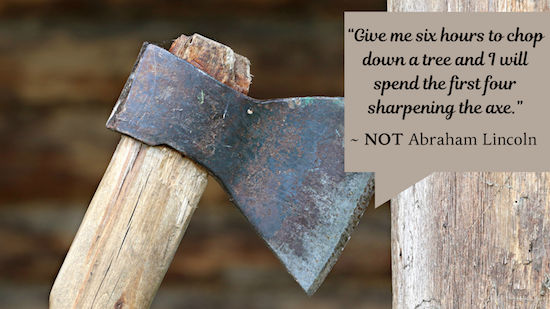

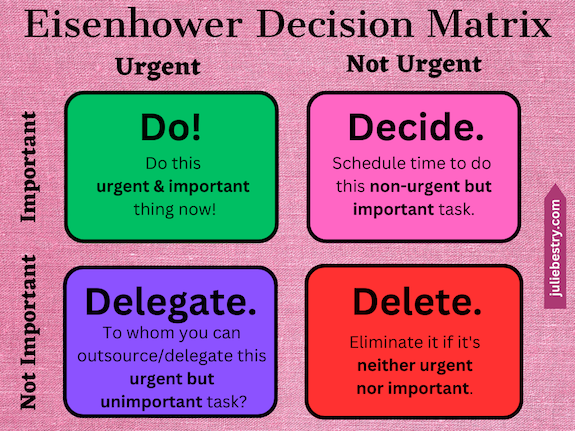

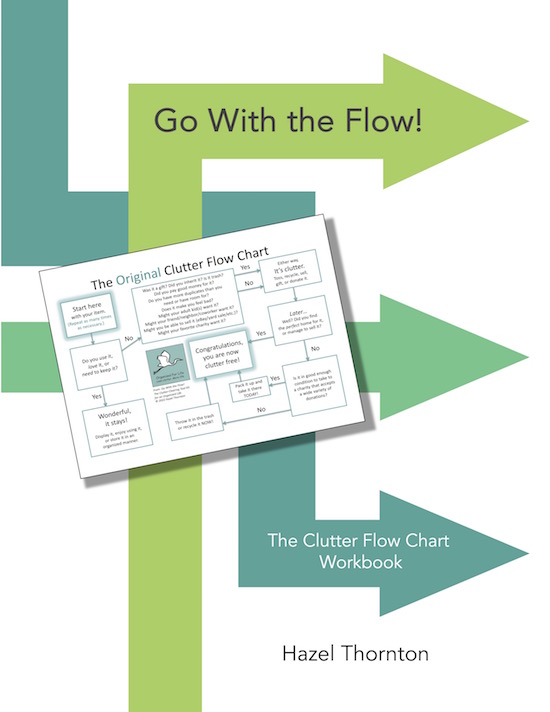


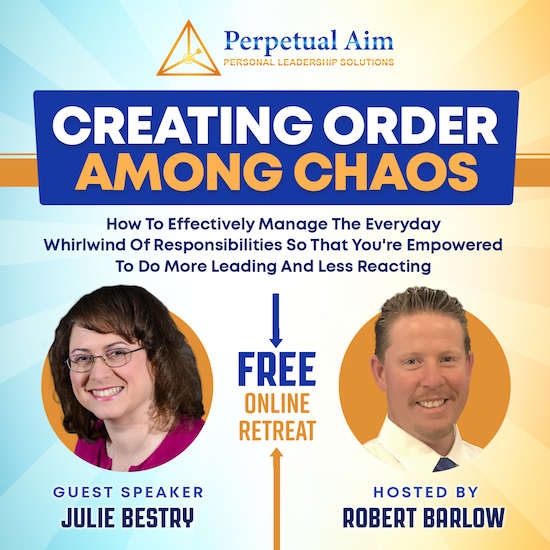


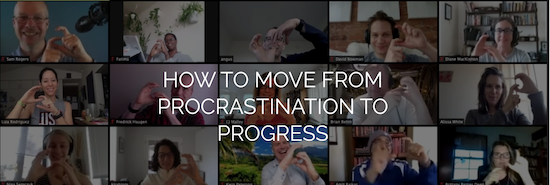
 Create an account and then book a session for the time you want, and at the appointment moment, you join a video call. New sessions are available every 15 minutes, so if you’re feeling the need for support, you won’t have to wait long, even on weekends or in the evenings.
Create an account and then book a session for the time you want, and at the appointment moment, you join a video call. New sessions are available every 15 minutes, so if you’re feeling the need for support, you won’t have to wait long, even on weekends or in the evenings.

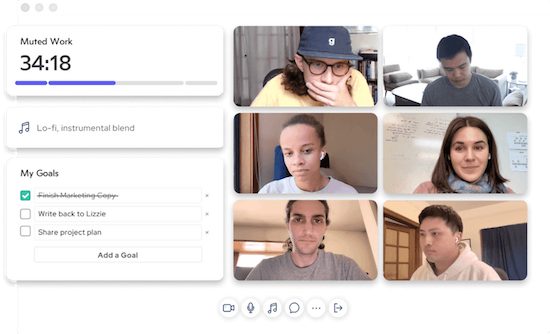
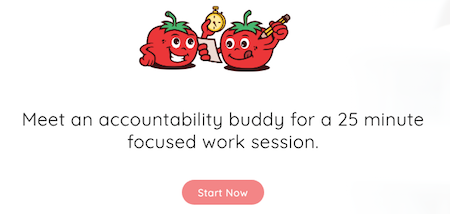
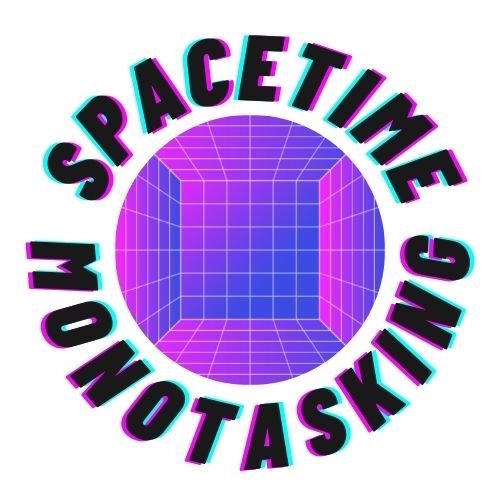



Follow Me